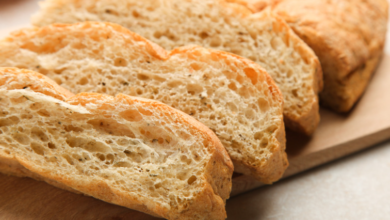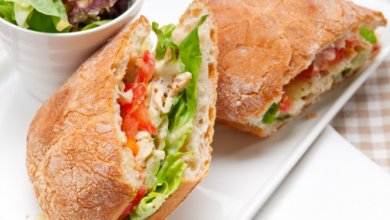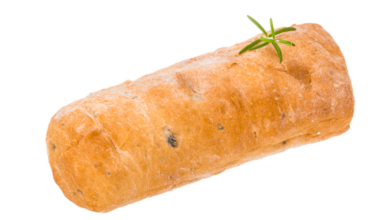Ciabatta Vs. White Bread: The Comparison

What To Know
- Ciabatta offers a unique flavor, texture, and nutritional profile that may appeal to those seeking a more rustic and flavorful bread.
- White bread, on the other hand, is a versatile and accessible option that is suitable for a wide range of culinary applications.
- It can be kept at room temperature for up to 3 days or in the refrigerator for up to a week.
When it comes to bread, there are countless varieties to choose from. Two popular options are ciabatta and white bread. While both are made from flour, water, and yeast, they differ in several key aspects. In this blog post, we will delve into a comprehensive comparison of ciabatta vs white bread, exploring their characteristics, nutritional value, and culinary applications.
Appearance and Texture
One of the most striking differences between ciabatta and white bread is their appearance. Ciabatta is characterized by its large, open crumb structure with irregularly shaped holes. This unique texture is created by a high hydration dough that is stretched and folded during the kneading process. White bread, on the other hand, typically has a fine, even crumb with a close-knit texture.
Taste and Aroma
Ciabatta has a distinctive tangy flavor with a slight sourness. This flavor is attributed to the long fermentation process that the dough undergoes. White bread, on the other hand, has a more mild and neutral taste profile. In terms of aroma, ciabatta boasts a robust, yeasty scent, while white bread has a more subdued aroma.
Crust
The crust of ciabatta is thin, crispy, and golden brown. It is often dusted with flour before baking, giving it a rustic and artisanal appearance. White bread typically has a softer, thinner crust that is less pronounced.
Nutritional Value
Both ciabatta and white bread provide carbohydrates, protein, and fiber. However, there are some differences in their nutritional content. Ciabatta tends to be slightly lower in calories and fat than white bread. It also contains more fiber, which is important for digestive health and satiety. White bread, however, is generally higher in sodium and sugar.
Culinary Applications
Ciabatta’s sturdy texture makes it ideal for sandwiches, bruschetta, and paninis. Its open crumb structure allows for easy absorption of fillings and sauces. White bread, with its soft and versatile texture, is well-suited for sandwiches, toast, and bread crumbs. It is also a popular choice for French toast and bread pudding.
Which Bread is Better?
Ultimately, the choice between ciabatta and white bread depends on personal preferences and dietary needs. Ciabatta offers a unique flavor, texture, and nutritional profile that may appeal to those seeking a more rustic and flavorful bread. White bread, on the other hand, is a versatile and accessible option that is suitable for a wide range of culinary applications.
Final Thoughts: A Matter of Taste and Choice
Whether you prefer the tangy flavor and open crumb of ciabatta or the mild taste and soft texture of white bread, both options offer distinct culinary experiences. The choice between these two bread varieties is ultimately a matter of personal taste and dietary preferences.
Popular Questions
1. Is ciabatta healthier than white bread?
Ciabatta is generally lower in calories, fat, and sodium than white bread. It also contains more fiber.
2. Which bread is better for sandwiches?
Ciabatta’s sturdy texture makes it ideal for sandwiches, as it can hold up to fillings and sauces without becoming soggy.
3. What is the difference between ciabatta and focaccia?
Ciabatta has a large, open crumb structure, while focaccia has a flatter, denser texture. Ciabatta is also typically baked at a higher temperature than focaccia.
4. Can I make ciabatta at home?
Yes, it is possible to make ciabatta at home. However, it requires a high-hydration dough and a long fermentation process.
5. What is the best way to store ciabatta?
Ciabatta should be stored in a cool, dry place. It can be kept at room temperature for up to 3 days or in the refrigerator for up to a week.




